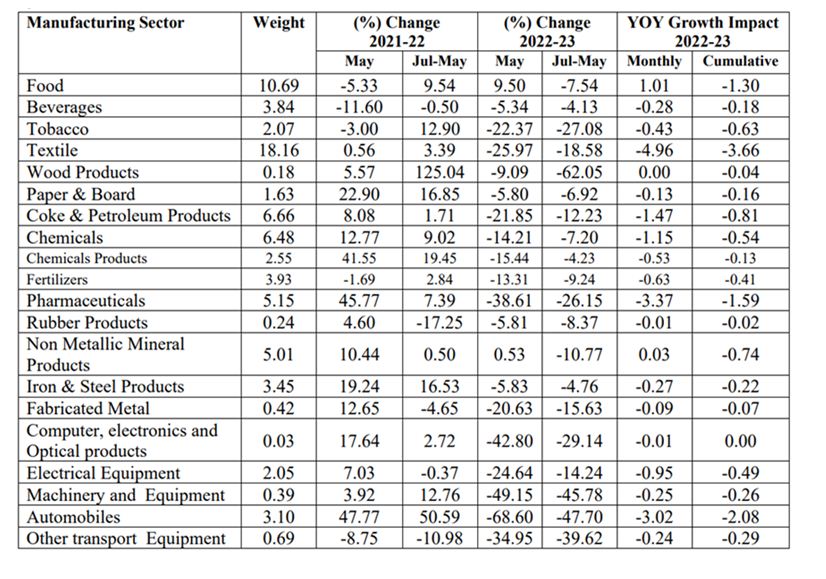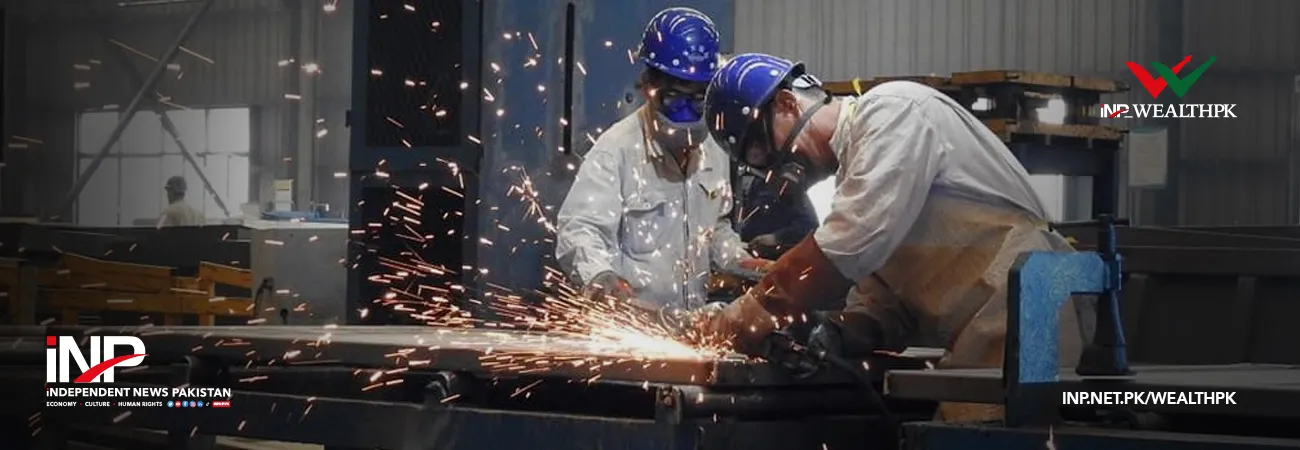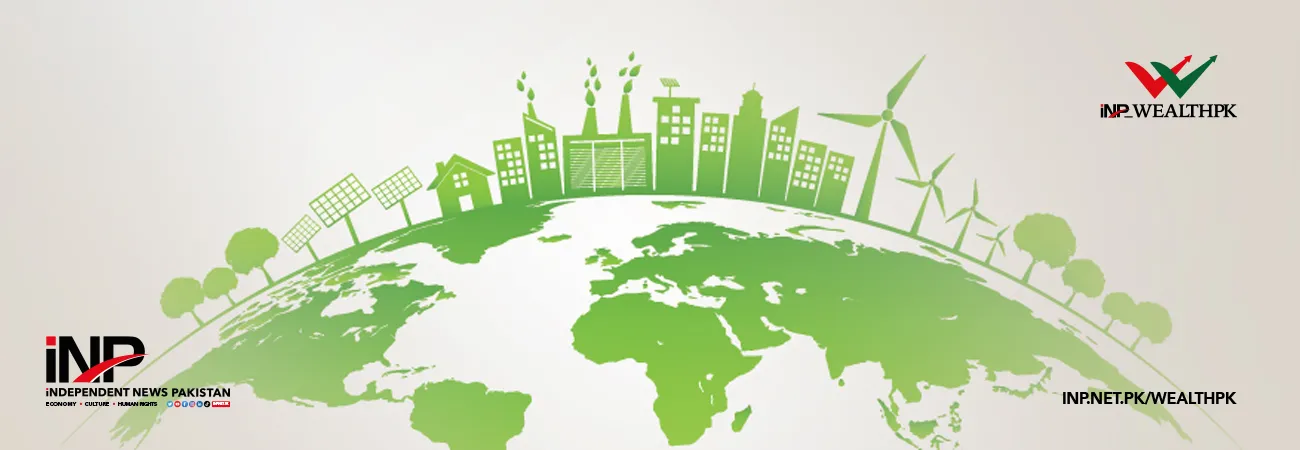INP-WealthPk
Ayesha Mudassar
The global economic slowdown, flood damages, and the State Bank’s restrictive monetary policy have created headwinds for the Pakistan’s industrial sector, leading to a marked slump in its performance during the last fiscal year 2022-23. Recent data for the Large-Scale Manufacturing Index (LSMI) in May 2023 reveals a worrying 14.37% year-on-year decrease. In addition, the 11-month (July-May) period of FY23 also shows an overall decline of 9.87% year-on-year. Performance of almost all major sectors declined, including textiles, automobiles, pharmaceuticals, food, petroleum products, cement and chemicals.

Source: Pakistan Bureau of Statistics (PBS)
The textile sector witnessed a dip of 18.58% during the July-Mayperiod of FY23 as compared to 3.39% growth in the corresponding period of last year. Economic challenges, technological limitations, and fluctuations in raw material prices contributed to this decline. Growth of the automobile sector plunged by 47.70% during the period under review against 50.59% growth last year. Talking to WealthPK, Secretary oftheAuto Industry Development Committee (AIDC) AsimAyaz attributed this decline to exponential depreciation of the local currency, tighter monetary measures and rising inflation. “The decision to continue import restrictions on completely knocked-down (CKD) kits has proven damaging for the auto industry,” he said. Pharmaceuticals witnessed a dip of 26.15% during July-May FY23, against 7.39% growth over the same period last year. Elaborating on the reasons for the decline, Chairman Pharmaceutical Manufacturers Association Syed Farooq Bukhari said the drying-up of foreign exchange reserves and massive rupee devaluation hassignificantly reduced the country’s ability to import essential medicines or Active Pharmaceutical Ingredients utilised in domestic production.
Coke and petroleum products were down by 12.23% during July-May FY23 against the growth of 1.71% over the same period last year. Massive currency depreciation and high energy prices depressed the overall growth momentum. The performance of the food group witnessed a decline of 7.54% during the period under review against the growth of 9.54% over the same period last year. Chemicals are subdivided into two components – chemical products and fertilisers – with a total weight of 6.48 in Quantum Index of Manufacturing. The chemical products showed a contraction of 4.23% against the 19.45% growth seen previously, while fertiliser production drove down by 9.24%. However, there have been some positive contributions from the wearing apparel and furniture sectors. The production of leather products and other manufacturing (footballs) also increased.

Source: PBS
During the July-Mayperiod,furniture and leather products grew by 32.58% and 1.92%,respectively. Other manufacturing, particularly football production, increased by 31.33% during the period under review. The current situation highlights the need for comprehensive measures to address the challenges faced by the manufacturing sector. The government, industry stakeholders, and policymakers must collaborate to find innovative approaches that reduce costs, enhance productivity and improve competitiveness. By leveraging its strengths and resolving the issues faced by the industrial sector, Pakistan can become a more robust and thriving manufacturing hub.
Credit: INP-WealthPk











